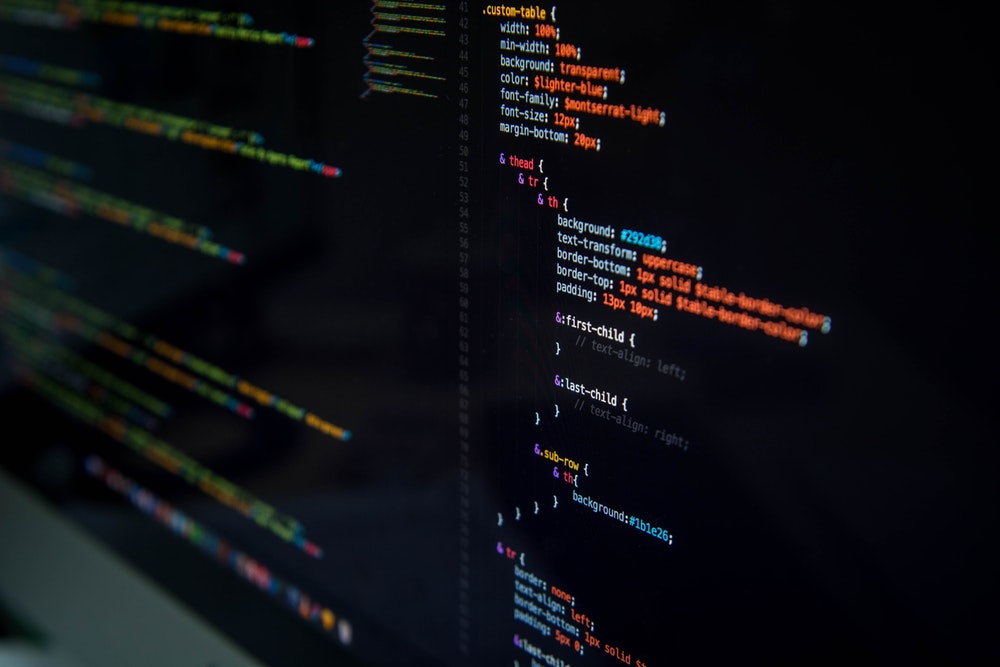DeFi – Revolution of the financial market?
Decentralised Finance (DeFi) describes a decentralised ecosystem in which financial services can be executed on the basis of a blockchain. This ecosystem is intended to work without the usual central intermediaries such as banks or other financial service providers - a revolutionary step? This Insight gives an overview of how DeFi works and its opportunities and risks.

DeFi does not refer to a predefined financial system, but rather to the idea of a financial world without central intermediaries such as banks or other financial service providers (also known as CeFi, or Centralised Finance). Control over such a financial system does not lie with individual persons or bodies, but is exercised by the community of users as a whole. The blockchain, often based on the Ethereum protocol, is intended to serve as the basis for the decentralised financial system in order to ensure its transparency and trustworthiness.
Decentralised Applications (DApps) usually form the basis of DeFi. DApps consist of several smart contracts that interact with each other. Smart contracts are programmes that can process contracts automatically. For example, smart contracts can trigger payments as soon as goods have been delivered or a service has been provided. However, they can also be used in a supportive manner in the lending (execution of granting credit) or the trading sectors (for example, the exchange of currencies/tokens against fiat currency such as the Euro) and many other areas. Many DApps are interoperable with other DApps, so that they – combined and linked – can form a DeFi ecosystem. The vision of many DeFi supporters is the emergence of a decentralised alternative financial system as a financial offshoot of a blockchain economy.
Market examples
Our current financial system is highly complex and only functions through the interaction of a multitude of individual (central) actors. The alternative concept of a DeFi ecosystem is developing rapidly, but is still in its infancy. Exciting DeFi projects that could underpin a DeFi ecosystem can currently be found in the areas of stable currency (such as MakerDAO), lending (for example Compound) and the trading of digital assets (such as Uniswap).
MakerDAO – stablecoin
Probably the biggest DeFi project is MakerDAO. MakerDAO has initiated one of the currently best-known so-called decentralised stablecoins, the DAI token. The value of the DAI is continuously corrected upwards or downwards using certain mechanisms, so that it always corresponds or comes very close to the stable equivalent value of one US dollar. In this way, the DAI should not be subject to the same high volatility as, for example, Bitcoins or other cryptocurrencies, but should represent a kind of stable digital substitute currency. The special feature of the DAI token is that it is not directly backed by the US dollar (or any other fiat currency), as is often the case with other stablecoins. Rather, ETH, the “digital currency” of the “Ethereum blockchain”, are deposited as (in effect) collateral in a deposit-like internal “wallet”. In addition, complex internal mechanisms of the Maker ecosystem exist to keep the value stable. Users of the ecosystem can use the DAI token, for example, as a means of payment towards other users of the Maker ecosystem.
The Maker ecosystem is controlled in a decentralised manner by its users. Holders of a so-called MKR token (a second token in the Maker ecosystem besides the DAI token) have voting rights that allow them to influence certain governance issues (known as “governance tokens”). Certain decisions are then automatically implemented via smart contracts which enable this form of decentralised control.
Compound – lending business
Compound is a decentralised credit platform for cryptocurrencies. Users can deposit their own cryptocurrencies and “borrow” other cryptocurrencies up to a certain amount. For example, if you own ETH and speculate that the value of ETH will increase, you can deposit ETH as collateral and receive a deposited amount of BTC, which you can then use as you wish. On the other hand, users can also “lend” their unused cryptocurrencies to other network participants and receive “interest” on them.
Just like MakerDAO, the Compound ecosystem is controlled via a governance token, the COMP token. COMP token holders can propose changes, discuss and vote on decisions.
Uniswap
Uniswap is a decentralised crypto exchange for cryptocurrencies. On the one hand, users can exchange their cryptocurrencies for other cryptocurrencies. On the other hand, they can provide the liquidity necessary for a functioning exchange by allowing users to deposit certain cryptocurrency pairs into a so-called liquidity pool and receive transaction fees.
Here, too, the decentralised system is controlled via a governance token. Holders of the UNI token decide on certain issues regarding the governance of the system.
Opportunities
The main advantages of a decentralised financial system are seen in the fact that transaction costs can be saved due to the elimination of intermediaries. The structure of a blockchain should ensure transparency, and at the same time the reliability of the ecosystem and the trust of the users that is necessary for it to function. In addition, the users themselves can decide on the control of the ecosystem; there is no central decision-maker.
Risks
Despite these advantages of a decentralised financial system, there are also significant disadvantages and risks.
Technical risks
Some of the risks are of a technical nature. DeFi relies heavily on the integrity of the underlying blockchain protocol. Errors in the protocol can make it easier for hackers to capture users’ cryptocurrencies, leading to user losses. Functioning governance mechanisms are therefore necessary, which in case of emergency must ensure that the financial system is “frozen” until the errors are corrected in order to prevent further damage to users.
Regulatory risks
From a regulatory perspective, the main new feature is the decentralised nature of DeFi. The current financial supervision system is based on the fact that there is at least one specific addressee that the supervisory authority can monitor (for example, in the case of a licensing obligations, reporting obligations, or responsibility for prospectuses). This allows the authority to take specific measures, if necessary, in order to prevent harm to the entire financial system.
However, DeFi is based precisely on the idea that there is no central decision-maker and thus no specific addressee for financial supervision. Complete decentralisation could therefore fail because supervisory authorities could switch to considering initiators or project participants who have influence on the DeFi project as operators of transactions relevant for supervisory purposes. Effective financial market regulation of DeFi projects would nevertheless be accompanied by considerable difficulties, as the initiators identified as operators may have little to no influence on most decentralised processes.
Next steps
The topic of DeFi does not yet seem to be a high priority among legislators (national or European). This may be due to the fact that legislative measures often lag years behind the real development of financial innovations. For example, the adoption of a Markets in Crypto-Assets Regulation (MiCAR), which is intended to address the special characteristics of cryptocurrencies and cryptocurrency-related services, is currently still being discussed at the European level – and this more than ten years after Bitcoin, the first cryptocurrency, was created in 2009. The topic of DeFi is to be excluded from MiCAR for the time being, because within the regulatory framework of MiCAR, the central decision-makers (such as issuers of cryptocurrencies) are to be regulated.
The same applies to the draft EU regulation on a pilot regime for market infrastructures based on distributed ledger technology (DLT). The pilot regime is intended, among other things, to give central securities depositories and operators of DLT trading systems a certain room for experimentation in order to be able to test out possible use cases for DLT. However, although this is about the application of distributed ledgers, central decision-makers (such as central securities depositories and trading systems) remain the connecting factor.
In order for DeFi to be able to realise its full potential, there will need to be some changes in the system of financial supervision – in addition to its broader acceptance in society and the economy through revolutionary use cases. The European Council is already discussing how DeFi can be regulated if there is no central decision-maker in a fully decentralised system, but legislative measures in this regard are not yet apparent. One thing is certain: DeFi will raise exciting technical, economic and legal/regulatory issues over the next few years – we will keep you posted.


